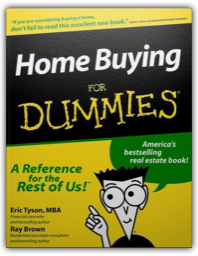
This may be the best comprehensive guide for home buyers. Home Buying for Dummies is coauthored by Eric Tyson, author of several other books in the For Dummies series, and Ray Brown, a long-time real estate professional. Like other books in the series, this one is an easy and even entertaining read. But it does not gloss over details in pursuit of simplicity. Home Buying for Dummies covers all the bases, providing clear explanations and reasonable judgments on how to select a mortgage, hire a real estate agent, find the right house, and negotiate a good deal. The book goes further than most in providing helpful, specific information. For example, in discussing ways to save money for a future down payment, Home Buying for Dummies even includes the phone numbers for various mutual funds appropriate to different investment time frames. —Barry Mitzman 
Literature Links for Nutrition and Health is the first health education teaching manual to show training and in-service elementary school teachers (grades 1-3) how to teach about food and nutrition using the children's picture books they already have in their classrooms. This integrated curriculum teaches several health-related concepts such as moderation, variety, and serving sizes while also teaching colors, shapes, numbers, manners, and time. The 31 lessons, each centering on a specific children's book, make connections across the curriculum from the two featured disciplines, health education and language arts, to six other academic subjects: science, social studies, math, physical education, art, and music. For pre-K -3 classroom teachers and health education instructors. 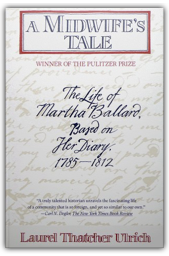
Drawing on the diaries of a midwife and healer in eighteenth-century Maine, this intimate history illuminates the medical practices, household economies, religious rivalries, and sexual mores of the New England frontier. 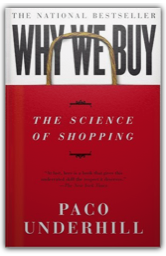
In an effort to determine why people buy, Paco Underhill and his detailed-oriented band of retail researchers have camped out in stores over the course of 20 years, dedicating their lives to the "science of shopping." Armed with an array of video equipment, store maps, and customer-profile sheets, Underhill and his consulting firm, Envirosell, have observed over 900 aspects of interaction between shopper and store. They've discovered that men who take jeans into fitting rooms are more likely to buy than females (65 percent vs. 25 percent). They've learned how the "butt-brush factor" (bumped from behind, shoppers become irritated and move elsewhere) makes women avoid narrow aisles. They've quantified the importance of shopping baskets; contact between employees and shoppers; the "transition zone" (the area just inside the store's entrance); and "circulation patterns" (how shoppers move throughout a store). And they've explored the relationship between a customer's amenability and profitability, learning how good stores capitalize on a shopper's unspoken inclinations and desires. 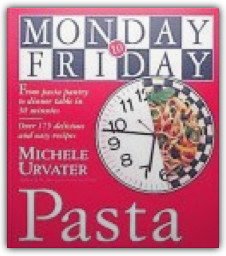
Second in the Monday-to-Friday series, here's a pasta book with a difference. For two-worker families, single parents, and other busy people, Ms. Urvater marries the innovative Monday-to-Friday pantry-based approach with everyone's favorite food, pasta. The result is a guide to making over 175 delicious pasta dishes in roughly the time it takes to boil a pot of water. The range of recipes includes soup (Comforting Pasta Fagioli), seafood (Scallops Casino with Bowties), meat (Beef and Glass Noodles, Chic Chorizo), and salad (Couscous and Lentil Salad, Rotelle a la Greek Salad). Monday-to-Friday and the noodle: It's as perfect a match as spaghetti and meatballs. Selection of the Better Homes & Gardens Family Book Service and Book-of-the-Month Club's HomeStyle Books. 
Repackaged with a bright, series-starting cover and perfect-binding, this book is being reannounced in conjunction with Urvater's Monday-to-Friday Pasta. Here is the James Beard Award-winning cookbook (over 198,000 copies in print) that solves every family's weeknight dinner blues with over 300 recipes and an inspired system of weeknight cuisine, from stocking the pantry to dining strategies. Irene Sax in Newsday called it "the new book I'll probably use most." 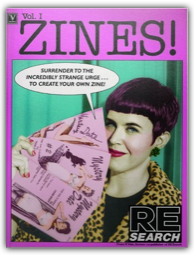
One of the most expressive areas of the comics publishing world belongs to minicomics: self-published, usually photocopied, very personal works. Minicomics often get grouped along with zines: small-press, very individualistic, magazines. V. Vale, one of the driving visionaries behind RE/Search Publications, brought together this collection of "incendiary interviews with independent publishers," which captures the excitement and raw energy of counter-culture zine publishing. |

Zines, Vol. Two includes a fantastic, in-depth interview with Dishwasher Pete, whose goal was to wash dishes in every state of America. Keffo of Temp Slave talks about very funny pranks on the job, and advocates restoring the I.W.W. (International Workers of the World). McJob continues the analysis of the workplace and its perils. John Marr discusses his favorite bizarre murders in Murder Can Be Fun. A history of proletarian novels is featured, plus reviews of many independent publications. This book has been used as a textbook in university classes for cultural studies, journalism, and media criticism. 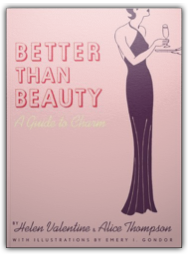
Chronicle Books resuscitates the long-lost art of charm with this classic compendium of hints, tips, and tricks guaranteed to boost anyones charm quotient. First published in 1938, this delightful handbook is overflowing with timeless advice to guide readers through a maze of social interactions with wit and grace. More than an etiquette or personal grooming book, Better than Beauty tackles complicated social situations with delicacy: How to be kind to atrocious people How to avoid the gossip mill How many drinks is too many drinks How to deflect unwanted advances from married men How much to tip And much, much more With good humor, authors Helen Valentine and Alice Thompson offer straightforward charm counsel, making it a cinch to win the admiration of friends, family, and suitors. Featuring original artwork, Better than Beauty proves that charm never, ever goes out of style. 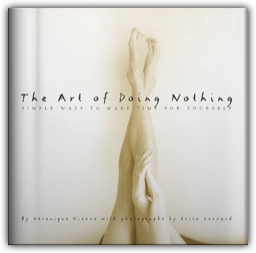
Much more than merely a book about nothing, this is a concentrated guide to cultivating a sense of serenity. Simple living expert Sarah Ban Breathnach calls it a "charming prescription for harried hearts and overwrought minds" that's "filled with persuasive reminders that we do too much and live too little." From its bits of well-taken wisdom ("Learn to say, 'I don't know,'"), to tranquil seaside photos, to little lessons on how to meditate, procrastinate, even turn a bath or wine tasting into intensely spiritual experiences, The Art of Doing Nothing is bound to help even the most high-strung, PalmPilot-toting folks remember exactly how it feels to fully relax. —Erica Jorgensen 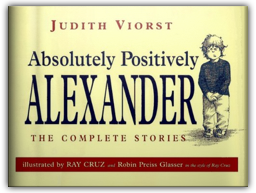
First published in 1972, Alexander and the Terrible, Horrible, No Good, Very Bad Day introduced to the world a feisty young hero who soon captured the hearts of a generation. Since then Alexander has returned in Alexander, Who Used to Be Rich Last Sunday and Alexander, Who's Not (Do you hear me? I mean it!) Going to move, and his position as a classic character in children's literature is assured. Alexander is everyone's favorite boy, struggling against those obstacles that seem to get in the way of growing up, with the most formidable ones being his siblings. Here, all three Alexander stories are combined in one book — a perfect way for Alexander to be introduced to a whole new generation of certain fans. 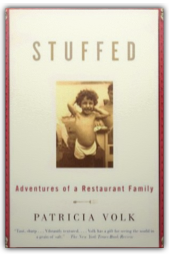
Patricia Volk's enchanting memoir nails both 20th-century American life and the glorious eccentricities of her relatives with the gift for vivid detail of a fiction writer. (After all, she's published one novel and two short-story collections.) "Our hallway was the color of ballpark mustard. The living room was cocoa, my mother's wall-to-wall, iceberg green," she tells us. Volk begins with her adored immediate family: charismatic father, hypercritical but loving mother ("Mom made me, and now she will make me better"), and older sister Jo Ann, best friend and occasional mortal enemy. But they're only the beginning, just as the garment-district restaurant that rules her father's life is only one of the family achievements. Great-grandfather Sussman brought pastrami to the New World. Grandfather Jake, a demolition expert, was profiled in The New Yorker. "Everybody did one thing better than anybody else. Aunt Gertie sang the works of Victor Herbert. Aunt Ruthie mamboed. Granny Ethel braked with such finesse it was impossible to tell the moment the car went from moving to a stop." Of course, perennially negative Aunt Lil embroidered a pillow with the motto "I've Never Forgotten a Rotten Thing Anyone Has Done to Me"—but maybe she was embittered by the fact that Uncle Al slept with her for 11 years then refused to marry her because she wasn't a virgin. (She sent out wedding invitations anyway, and he fell in line.) All these great stories are arranged along a casual chronological arc ("from Sussman Volk in 1888 to Cecil Volk in 1988"), but nothing is ever really finished. Her father closes Morgen's in Manhattan; her sister's husband opens a trendy food shop in Florida. "We're still feeding people," Volk asserts. Readers will find her prose as delicious as family housekeeper Mattie's chocolate cake. Recipes included. —Wendy Smith 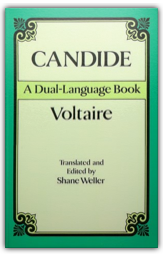
Political satire doesn't age well, but occasionally a diatribe contains enough art and universal mirth to survive long after its timeliness has passed. Candide is such a book. Penned by that Renaissance man of the Enlightenment, Voltaire, Candide is steeped in the political and philosophical controversies of the 1750s. But for the general reader, the novel's driving principle is clear enough: the idea (endemic in Voltaire's day) that we live in the best of all possible worlds, and apparent folly, misery and strife are actually harbingers of a greater good we cannot perceive, is hogwash. 
Cat's Cradle, one of Vonnegut's most entertaining novels, is filled with scientists and G-men and even ordinary folks caught up in the game. These assorted characters chase each other around in search of the world's most important and dangerous substance, a new form of ice that freezes at room temperature. At one time, this novel could probably be found on the bookshelf of every college kid in America; it's still a fabulous read and a great place to start if you're young enough to have missed the first Vonnegut craze. |

My Library
Collection Total:
1390 Items
1390 Items
Last Updated:
Mar 22, 2009
Mar 22, 2009

 Made with Delicious Library
Made with Delicious Library